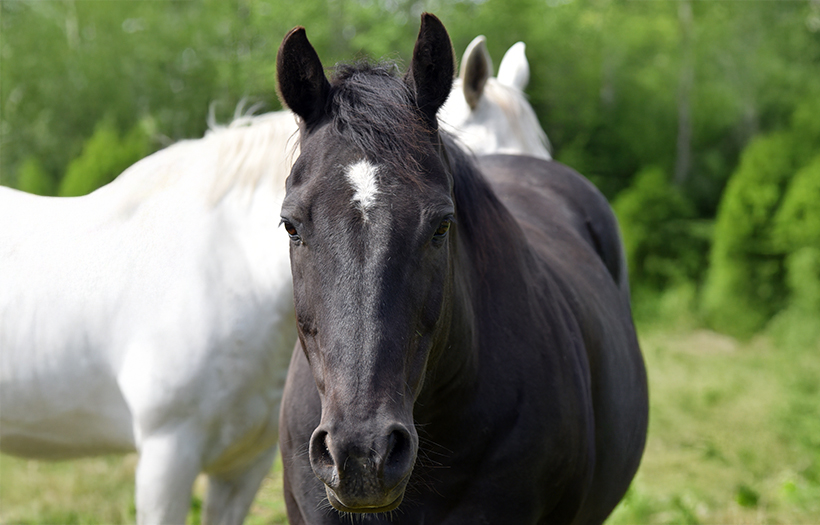Amino Acid Requirements for Horses

In order to fuel, repair, and recover muscle, equine diets must optimally contain a superior amino acid profile, including all 10 of the essential amino acids. Most horse owners can quickly name the crude protein level in the feed they provide their horses. But, what horse owners really need to know about is the amino acid content. Protein is made up of amino acids, similar to how a chain is made up of links. There are two basic categories of amino acids:
Essential and nonessential. Essential amino acids must be provided in the diet, as the horse cannot create them on its own in the digestive tract, where the nonessential amino acids can be made.
Another key point is that some amino acids are known as “limiting” amino acids. This means that if a horse runs out of this type of amino acid, it can’t utilize any of the remaining amino acids present in the feed. If the horse has enough of the first most-limiting amino acid, but then runs out of the second most-limiting amino acid, it can’t use the remaining amount of the third most limiting, and so on.
In horses, the first three most-limiting amino acids, in order, are lysine, methionine and threonine.
Generally speaking, if these three amino acids are present in sufficient quantities, the ingredients used also provide the remaining amino acids in sufficient quantities. Here in Canada, you will not find the amino acids listed on the guaranteed analysis of horse feed tags, you will need to obtain this information from you feed manufacturer. The information is very important as it is an indication of the quality of the protein sources and the balanced nature of the feed.
If you are looking for a feed that may help impact topline, be sure to look ask for the list of ingredients as well as be sure to look at Pur Athlete and Optimal to add to your horses feeding program.
If any questions please do not hesitate to contact your Nutrition Consultant for the health of your horse.
